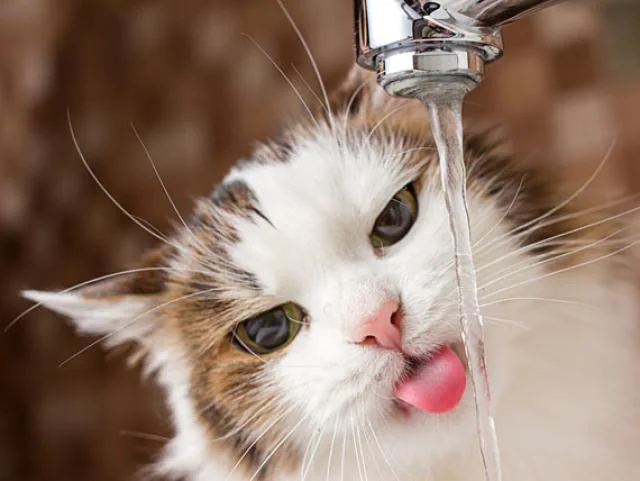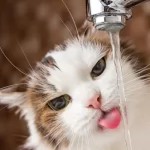The Importance of Water for Cats
Cats need water, but their domestic lives sometimes work against them. Household cats originated from desert-dwelling felines who got most of their water from their food. Yet many cats are fed dry foods that have low water content, so they are forced to drink water from a bowl to compensate.
Some cats go with the flow, so to speak, and do just fine with this set up, but others are in what amounts to a constant state of mild dehydration. This can set them up for urinary problems, including bladder stones and feline idiopathic cystitis (FIC). An important part of treating these diseases is increasing water consumption in order to promote the production of dilute urine.
So, as anti-intuitive as it may sound, if your cat is urinating outside of the litter box, or has any of the other symptoms of lower urinary tract disease, you want to do everything possible to encourage water consumption. You want them to pee more, not less.
How can we get our cats to drink more water? One of the easiest methods is to switch from dry to canned food. Yes, this can be a little inconvenient and more expensive, but if you look at it as a drug-free way to treat and prevent disease, it becomes more attractive. Of course, all canned foods aren’t created equal; some are the feline equivalent of junk food. Make sure to pick a brand that is made from high quality ingredients and meets AAFCO (Association of American Feed Control Officials) standards.
You’d think that cats would readily switch to canned food, since it more closely mimics their natural diet. But this is not always the case. Change can be very stressful for cats, and if you remember, stress plays an important role in FIC, so we want the transition to go smoothly. If you put the canned food down and your cat loves it, great. If not, here are a few tips that should help:
Try mixing a small amount of the new canned food in with the old dry food and gradually — over a week or two — increase the ratio in favor of the canned. In fact, this is a good way to make any dietary modification, since sudden changes can lead to vomiting and/or diarrhea.
It is okay for cats to be hungry, despite all the fuss they will inevitably make. If your cat refuses the canned food, take away all the dry food and offer the canned 12 hours later. Leave it out for a few hours. If your cat still won’t eat it, offer a small meal of dry food, but don’t leave any extra out. Repeat this process roughly every twelve hours.
If this doesn’t work after a few days, try sprinkling a little of something that your cat finds irresistible on top of the canned food (e.g., a few crushed treats or dry food kibbles, a little tuna, Parmesan cheese, etc.), or even temporarily try a less healthy brand of canned food that has more sugar, salt and animal digests — ingredients that pets find hard to resist.
Cats, especially fat cats, cannot skip too many meals without risk to their health. They can develop a potentially fatal disease called hepatic lipidosis if their fat stores are mobilized too quickly. So never think that you can simply wait out your cat until he’s ready to eat the new food. If it proves too difficult to make the switch, don’t despair, you do have other options.
If your veterinarian has prescribed a specific diet to either dissolve urinary stones or otherwise promote bladder health, ask if it is available in a dry form. Most pet food manufacturers make both dry and canned varieties to satisfy the tastes of even the most finicky felines.
To encourage water consumption, place several different types of bowls (shallow ceramic saucers, deeper plastic containers, etc.) around your house and see if your cat prefers certain types or locations over others. Refill bowls with fresh water daily and wash them with hot, soapy water at least weekly.
Some cats prefer to drink from a running source of water. Try leaving a faucet on at a fast drip several times a day or even purchase one of the kitty water fountains that are now widely available. If your situation calls for it, your veterinarian can even teach you how to inject fluid boluses under your cat’s skin.
With patience and persistence, most owners can find a way to get their cats to take in enough water to keep them healthy.
Dr. Jennifer Coates




